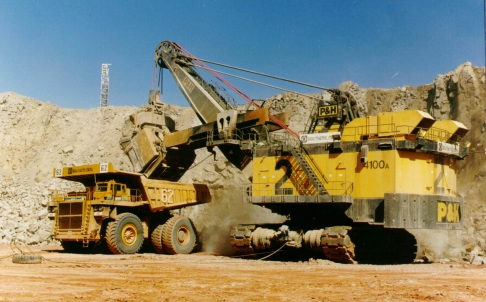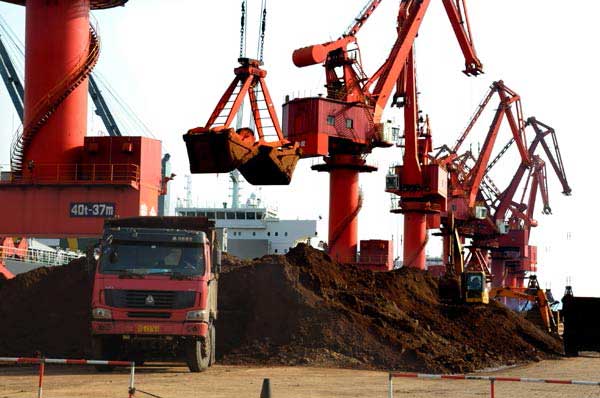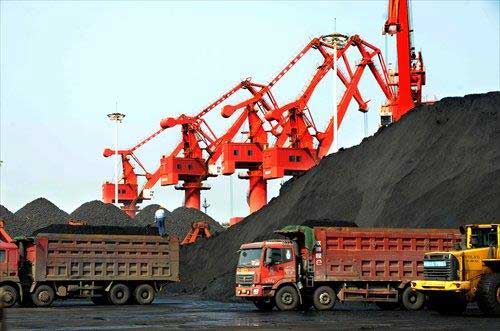Indonesia`s export ban to curb China aluminium expansion
Source: www.chinamining.org Citation: Reuters Date: Feb.10, 2014
China has found an inadvertent ally in its efforts to slim down a bloated aluminium sector, with Indonesia`s ban on exporting metal ores set to boost costs of the raw material bauxite and pile more pressure on struggling smelters.
Beijing has been issuing broadbrush rules aimed at reining in overcapacity in sectors such as aluminium and steel for about a decade, but plans have usually been thwarted by resistance from local governments anxious to boost growth.
In the aluminium sector, ageing and inefficient smelters are already grappling with rising power prices, but now face potential bauxite shortages after Indonesia halted ore shipments on Jan. 12, as part of efforts to make miners process minerals at home.
China is the world`s biggest aluminium producer and curbing expansion could ease a global surplus of the metal and even lead to the country resuming sizeable imports of refined aluminium.
It is also likely to provide support to the price of a metal that has been depressed for years.
"(Indonesia`s ban) will have a huge impact on the Chinese aluminium industry in the medium term," said Citi China commodities analyst Ivan Szpakowski.
Despite building up big stockpiles ahead of the export ban, Chinese aluminium makers may struggle to find alternative supplies at similar prices.
It takes roughly five tonnes of bauxite to produce one tonne of aluminium. Analysts estimate China has around 10 months supply of bauxite stockpiled after importing 48 million tonnes from Indonesia alone last year, up 79 percent from a year earlier.
"China`s bauxite stocks may be used up around the end of this year and refineries would need to import," said a manager at a big Chinese aluminium smelter.
But bauxite prices are likely to be higher by then and drive up alumina and aluminium prices, added the manager, who declined to be identified as he was not authorised to speak to media.
China`s production of aluminium is expected to grow 8 percent to 26.5 million tonnes in 2014, accounting for half of global output, according to Beijing consultancy AZ China.
AUSTRALIA
China could get some bauxite from Australia, where Rio Tinto is closing its loss-making alumina refinery Gove in northern Australia. The firm will continue mining and expects to be able to export 7-8 million tonnes a year.
But Macquarie estimates that Pacific basin suppliers will not be able to make up for the drop in Indonesian shipments, leaving China short of about 10 million tonnes that would have to be filled by mines in Brazil, Guinea, Ghana and Jamaica.
Sourcing imports from further afield could add $80-$100 a tonne, or 5 percent, to the all-in aluminium price which includes LME futures prices plus physical surcharge for delivery, given extra logistics costs, it said.
"This will put pressure on Eastern seaboard Chinese smelters, and if China`s clamp down on inefficient capacity means closures ... China could start to import refined material again - if the price is right," Macquarie said in a report.
The Western world is still working through an overhang of around 10-12 million tonnes of aluminium built up in the wake of the global financial crisis which has kept a lid on prices.
INDONESIAN SMELTER PLANS
Indonesia`s export ban was set down in 2009, but has been ignored by many miners in the hope the government will give ground, as it has with other controversial policies in the past.
China Hongqiao Group Ltd is one firm building an Indonesian alumina refinery that is due to be completed by end-2014. It expects to resume bauxite exports in the second half of 2014, after getting a break from the Indonesian government because it is building a refinery.
But other firms, faced with high costs and regulatory uncertainty, are not rushing in.
Paul Adkins of AZ China said China may be able to secure enough bauxite to scrape by before smelters are built to allow Indonesia to export alumina, which could be within two years, depending on how much infrastructure is in place.
But with London Metal Exchange prices stubbornly mired at 4-1/2 year lows around $1,720 a tonne, some believe markets appear to be underestimating the impact on supply.
"(The ban) doesn`t just question the expansions in China, it actually threatens the existing industry as well," said London-based BNP Paribas analyst Stephen Briggs, warning that expectations the Indonesian government will retreat could backfire.
"To me, the market is putting too low a probability on it."
About CHINA MINING
Since first held in 1999, the scope and influence of CHINA MINING has grown rapidly year by year. As a global mining summit forum and exhibition, CHINA MINING Congress and Expo has become one of the world’s top mining events, and one of the world’s largest mining exploration, development and trading platforms, covering all aspects of the whole mining industry chain, including geological survey, exploration and development, mining rights trading, mining investment and financing, smelting and processing, mining techniques and equipment, mining services, etc. playing an active promotion role in creating exchange opportunities and enhancing mutual cooperation between domestic and foreign mining enterprises.
CHINA MINING Congress and Expo 2014 will be held at Meijiang Convention and Exhibition Center in Tianjin on October 20-23, 2014. We invite you to join the event and to celebrate the 16th anniversary of CHINA MINING with us. For more information about CHINA MINING 2014, please visit: m.balanzskin.com.








